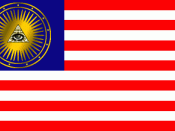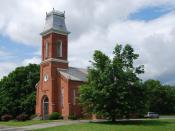Throughout history women have always been seen as inferior to men; they are stereotyped to be weaker, slower, and less intelligent. However, over time, women have fought for their rights, for their turn to speak, and for an equal society where landing a job is based on your resume and not your sex. Nowadays, women are seen as equals - doing what men can do, achieving what every man thought women could not, and some even surpassing men by becoming more successful, content and accomplished. The Handmaid's Tale, a dystopian novel, displays patriarchy and approaches what roles men and women have in the new society. When the United States suffered a right-wing takeover, the Republic of Gilead, a system designed by Atwood, takes over to resolve the problems of infertility and the decreasing population in the society. Offred, the protagonist, guides readers through her point of view of the methods that the government uses to solve these problems.
For the "greater good" of the society, the Republic of Gilead causes the population to suffer by resorting back to degrading and suppressing women. Just like our society unjustly decided who had the rights to freedom, speech and will, the Republic of Gilead does the same through seizing all freedom and possessions from women, forcing sex upon women and eliminating those who fail to perform the procedures or laws of the "new" system.
The novel starts off with Offred; the protagonist and the narrator, explaining what has happens in her society, though, not why. It is clear what civilization has changed into but not so clear as of what procedures are taken to create such an outcome. By reinforcing strict laws, Gilead shows merciless power, in extreme terms, over humanity to correct infertility and the decrease in population. The Republic of...



Good
Nice essay!
0 out of 0 people found this comment useful.